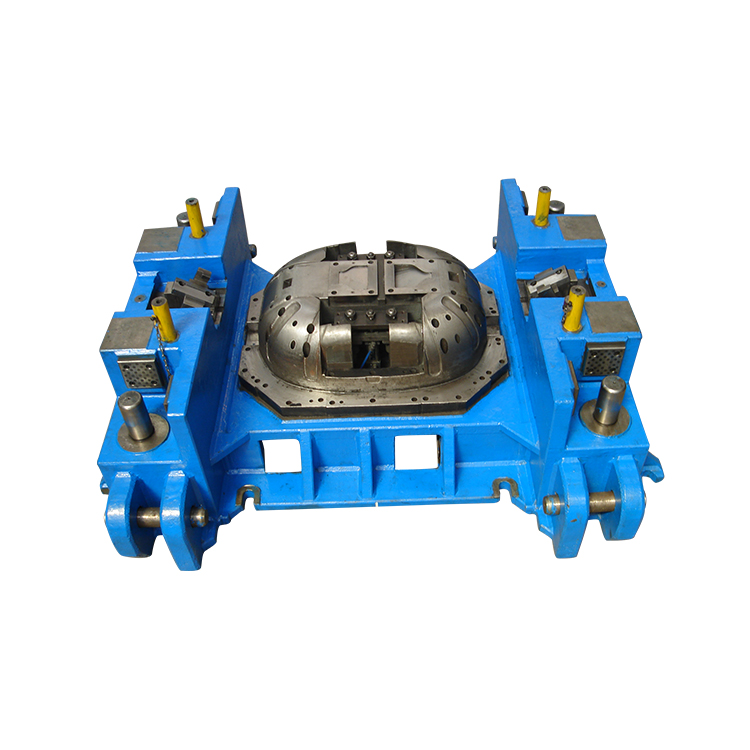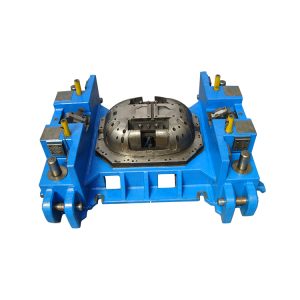 Automobile molds / Die
Automobile molds / Die
Automotive molds, in a narrow sense, are the general name for the molds used to stamp all stamping parts on the automobile body. That is, “auto body stamping mold”. For example, top cover flanging mold, beam reinforcement plate pressing mold, etc.
When people talk about cars, the first thing that comes to mind is the body of the car. In other words, the body is the iconic assembly of the car. The body represents the image characteristics of that car.
The most important component of the automotive molds are the cover mold. This type of mold is mainly a cold punching mold. “Automobile mold” in a broad sense is the general term for molds that manufacture all parts of automobiles. For example, stamping molds, injection molds, forging molds, casting wax molds, glass molds, etc.
Stamping parts on automobile bodies are generally divided into cover parts, beam parts and general stamping parts. Stamping parts that can clearly express the image characteristics of a car are car covering parts. Therefore, the more specific automobile mold can be said to be “automobile panel stamping mold”. Referred to as automobile panel die.
For example, front door outer panel trimming dies, front door inner panel punching dies, etc. Of course, there are stamping parts not only on the car body. All stamping parts molds on automobiles are called “automotive stamping molds”.
To sum it up:
- Automotive molds are the general term for molds used to manufacture all parts of automobiles.
- Automotive stamping molds are used to stamp all stamping parts on automobiles.
- The automobile body stamping mold is a mold used to stamp all stamping parts on the automobile body.
- The automobile panel stamping mold is a mold used to stamp all the panel parts on the automobile body.
Now when we talk about automotive molds in this sector, we seem to be referring to automobile panel stamping dies. In order not to be confused with the generalized automobile stamping die, it is best to use automobile panel stamping dies instead of automobile stamping dies.
There are many forms of stamping dies, and stamping dies are also classified according to the nature of the work, mold structure, and mold materials.
Generally, it can be classified according to the following main characteristics:
Classification according to process properties
- Blanking die: a die that separates materials along a closed or open contour line. Such as blanking dies, punching dies, cutting dies, incision dies, trimming dies, slitting dies, etc.
- Bending mold: A mold that causes the sheet blank or other blanks to bend and deform along a straight line (bending line) to obtain a workpiece with a certain angle and shape.
- Drawing die: It is a die that converts sheet blanks into open hollow parts, or allows the hollow parts to further change their shape and size.
- Forming mold: It is a mold that directly copies the blank or semi-finished workpiece according to the shape of the convex or concave mold, and the material itself only produces local plastic deformation. Such as bulging mold, shrinking mold, expanding mold, undulating mold, flanging mold, shaping mold, etc.
Classification according to the degree of process combination
- Single-process mold: A mold that only completes one stamping process in one stroke of the press.
- Composite mold:A mold that has only one station and completes two or more stamping processes at the same station in one stroke of the press.
- Progressive die (also called continuous die): It has two or more stations in the feeding direction of the blank. In one stroke of the press, two or more passes are completed at different stations one after another. Molds for above stamping processes.
Classification according to the processing method of products
According to different product processing methods, molds can be divided into five categories: punching and shearing molds, bending molds, drawing molds, forming molds and compression molds.
Punching and shearing dies: The work is completed by shearing. Commonly used forms include shearing dies, blanking dies, punching dies, trimming dies, edge forming dies, drawing punches and punching dies.
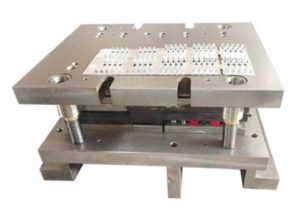
Bending mold: It bends a flat blank into an angled shape. Depending on the shape, accuracy and production volume of the part, there are many different forms of molds, such as ordinary bending dies, cam bending dies, and curling dies. Punch dies, arc bending dies, bending punching dies and twisting dies, etc.
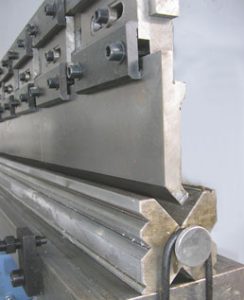
Drawing mold: Drawing mold is to make a flat blank into a bottomed seamless container.

Forming die: refers to the use of various local deformation methods to change the shape of the blank. The forms include convex forming dies, curling forming dies, necking forming dies, hole flange forming dies, and round edge forming dies.
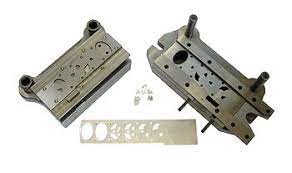
Compression mold: It uses strong pressure to flow and deform the metal blank into the required shape. Its types include extrusion dies, embossing dies, imprinting dies, and end-pressure dies.

Mold design and production process:
After receiving the customer’s order and product drawings, and communicating the technical details in detail with the technicians, the technical department starts to design the mold.
When the design is completed, computer simulation is carried out, and details are adjusted according to the simulation results. Finally, the draft is finalized after the simulation is passed, and the casting drawings are sent to Jihua for casting.
Then the casting mold body is completed and tested by Hailong Jihua, it is transported to Hailong Jitai workshop, hoisted to the rough machining area for rough machining, and after passing the rough machining inspection, it is transferred to the finishing area for finishing machining.
After finishing finishing, enter the mold debugging area for mold debugging.
And after the initial debugging is completed, the on-machine debugging is started, and the debugging is continued according to the data feedback of the actual punched sample.
The final stamped sample is sent to the customer for mold sample verification after being tested by a three-coordinate measuring instrument. After the mold samples pass the customer’s inspection, they will be finally delivered to the customer.
automotive molds, automotive molds, automotive molds, automotive molds, automotive molds, automotive molds, automotive molds, automotive molds, automotive molds, automotive molds, automotive molds, automotive molds, automotive molds, automotive molds, automotive molds, automotive molds, automotive molds, automotive molds, automotive molds, automotive molds,

